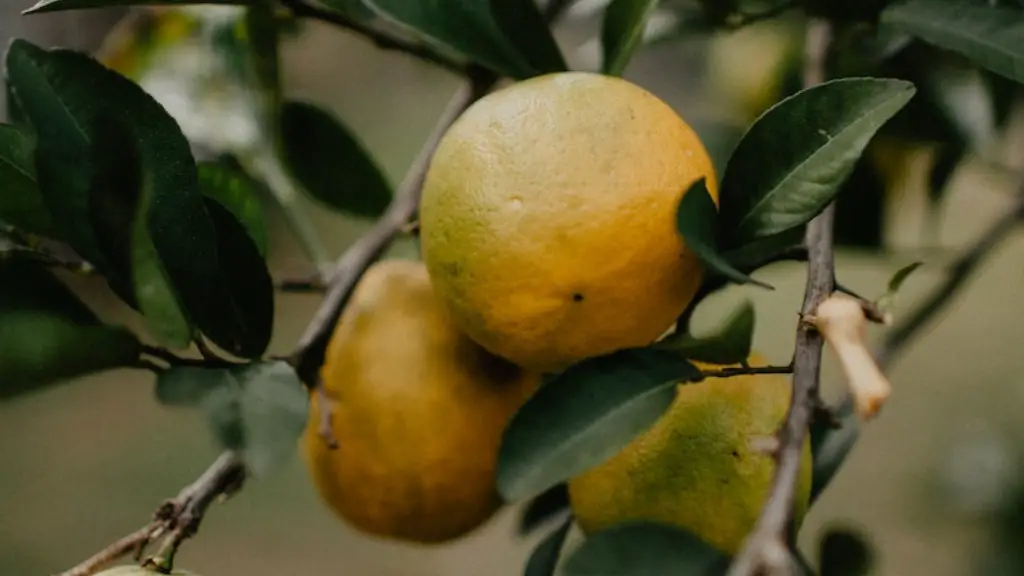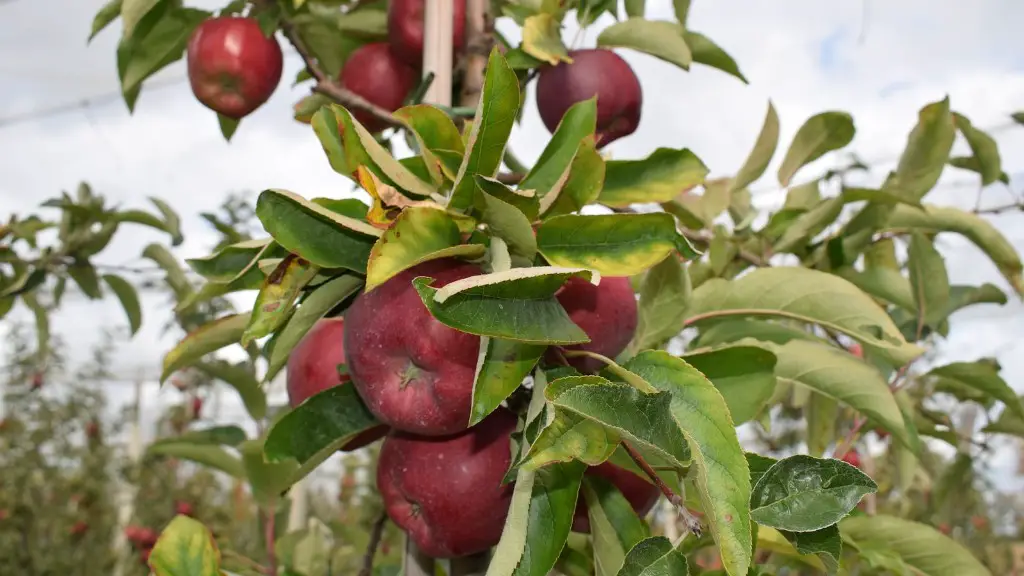What is an Avocado Tree?
Avocado trees are large evergreen trees that are native to Mexico and Central America. The trees can grow up to 30 feet tall and can produce over 500 fruits per tree! Avocado trees are also highly tolerant of drought and a variety of soils and climates. Furthermore, the trees can grow in a wide range of soils and temperatures, making them ideal for a variety of locations.
Avocado trees produce an edible fruit that has a thick, creamy flesh and a large, hard seed. The seed, called a pit, is what is used to grow an avocado tree. The pit can be planted directly in soil or in a pot, and it usually takes around 4–6 weeks for the pit to sprout and begin to grow.
Can You Grow a Producing Avocado Tree from the Pits?
The answer is yes, you can in fact grow a producing avocado tree from the pits! When the pit has sprouted, simply transplant it into the ground or a larger pot and continue to nurture it. With proper care and tending, your avocado tree should produce fruits in a few years’ time.
It is important to note, however, that the growth of an avocado tree is greatly dependent on the climate in which it is being grown. Warmer climates may speed up the process, whilst cooler climates will lengthen it. It may take anywhere between 5 to 8 years for the tree to reach full fruition, depending on the temperatures and other considerations.
Another point to consider is the type of avocado you want to grow. There are many different types of avocados, which all have distinct characteristics. Some are suited to different climates or soil types, or have different taste or size. You should select the type of avocado you would like to grow and research the best way to do so.
How to Maximize Yields for an Avocado Tree
Taking the time to properly care for your avocado tree will maximize its potential yields. Regular irrigation through both summer and winter helps the tree to remain healthy and productive. Pruning and fertilizing the tree when required will also help promote increased yields.
Furthermore, removing any fruits that do not reach an ideal size or taste will help the tree to focus its energy and nutrients back into the branch where the remaining fruit is growing. The fertilizers used will also depend on the variety of avocado being grown, as different varieties have different nutrient requirements.
Pest Control for an Avocado Tree
It is important to note that there can be some challenges in growing and maintaining an producing avocado tree. One of the most significant challenges is controlling and protecting against pests.
Common pests such as scale insects, aphids, whiteflies, and avocado thrips can damage the trees, cause defoliation, and reduce fruit yields. It is essential to take preventative measures to protect the tree by monitoring for signs of pests and by regularly spraying with an appropriate pesticide or insecticide.
Harvesting and Storing Avocado Fruit
The fruits from an avocado tree can be harvested when the avocados are mature and the skin is dark green to black in color. The best way to determine maturity is to gently press the fruit with a thumb. If the fruit gives slightly to pressure and yields, then it is ripe and ready for harvest.
Once the avocados are picked, they can be stored in either a fridge or a cool, dark place. Avocados that are ripe can be stored in the fridge for up to two weeks. Alternatively, unripe avocados can be left out on the counter until they are ripe, which usually takes a few days.
Using the Avocado Fruit
There are many ways to enjoy the avocados that are harvested from an avocado tree. The most popular is to eat them raw, either sliced or mashed. Avocados are highly nutritious and provide an array of vitamins and minerals, as well as being high in healthy fats.
Avocados can also be used to create a range of delicious dishes. From guacamole and salads to smoothies and desserts, avocados are a highly versatile ingredient. Avocados can also be used as a substitute for eggs or butter in baking.
Nutrient Requirements for an Avocado Tree
To ensure that an avocado tree produces an abundance of fruit, adequate nutrition is essential. The preferred soil type for avocado trees is a well-drained, sandy loam, which should be enriched with compost or fertilizer.
It is also important to ensure that the soil has adequate levels of phosphorus, potassium, nitrogen, iron, and zinc. Additionally, a range of micro-nutrients such as boron, molybdenum, and copper should also be added to the soil to ensure the tree is receiving all of the nutrients it requires.
Avocado Farming
Avocado farming can be a profitable venture, with a single tree producing hundreds of avocados per year. As such, it is important to be aware of the different markets and the demand for avocados.
For instance, local supermarkets and farmers markets are excellent places to sell fresh avocados, as well as restaurants and catering companies. There is also an opportunity to export avocados to other countries to gain a larger share of the market.
It is also important to understand the restrictions and laws that are in place for avocado farming, and any related licensing or regulations that must be adhered to. This can vary greatly depending on location and the country of origin.
Organic Farming of Avocado Trees
Organic farming is becoming increasingly popular, and many farmers choose to grow their avocado trees in an organic manner. This means avoiding any chemicals or artificial fertilizers and instead using natural methods such as mulch, beneficial insects, and beneficial microorganisms.
Organic farming helps to reduce the environmental impact of farming, as well as creating a product that customers are increasingly looking for. Furthermore, the avocados from organic farms have been found to have a much higher nutrient content than conventionally farmed avocados, which can be extremely beneficial.
Organic Pest Management for Avocado Trees
Organic pest management is essential for any organic avocado tree farm, as it limits the use of harmful chemicals and helps to condition the soil and protect the biodiversity of the area. Natural deterrents such as companion planting, trap crops, and natural predators can all be used to help repel or limit the damage caused by pests.
Organic farmers should also practice crop rotation and use mechanical methods such as weeding, pruning, and mulching as much as possible. This reduces the burden on the soil, as well as helping to protect the crop against potential pest outbreaks.
Avocado Tree Fungal Control
Fungal infection can be a major problem for avocado trees, and can have a devastating effect on the quality and yield of the crop. Controlling fungal infection can be difficult, however the best way is to focus on prevention.
This includes ensuring that the tree is planted in a well-drained location and ensuring that the soil contains adequate levels of potassium and nitrogen. Applying mulch to the soil will help to limit foliage contact with the soil and limit areas of infection. If a fungal infection does occur, then copper sprays or sulfur dust should be used to help control it.

